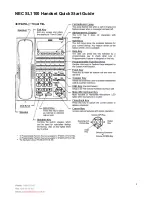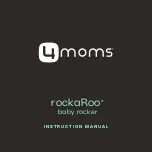
S4000C
5
•
Transmitters should be mounted in an area that is as free from wind, dust, water, shock,
and vibration as possible. See Section 9.3.4 for the environmental specifications of the unit.
If the sensor cannot be located away from dust and rain, then we recommend the use of
our splash guard GM P/N 10395-1 to help protect the sensor.
Sensors may be adversely affected by prolonged exposure to certain materials. Loss of
sensitivity or corrosion may be gradual if such materials are present in low concentrations, or it
may be rapid at high concentrations. The more important materials adversely affecting sensors
are:
•
Constant presence of high concentrations of Hydrogen Sulfide (H
2
S) gas
•
Silicones (often contained in greases and aerosols)
•
Halides, compounds containing Fluorine, Chlorine, Bromine and Iodine
•
Heavy metals, e.g. Tetraethyl Lead
•
Caustic and acidic liquids and vapors
The presence of poisons and contaminants in an area does not necessarily preclude the use of
a Model S4000C Intelligent Sensor. The feasibility of using a sensor in such areas must be
determined by an analysis of the specific factors in each application and General Monitors
should be consulted before attempting any such installation.
Sensors used in these areas usually require more frequent calibration checks than normal, and
typically have a shorter life. In many such applications, the standard two-year warranty would
not apply.
WARNING:
General Monitors discourages the painting of sensor assemblies. If the sensor
head is painted over, the gas will not be able to diffuse into the sensor. If the
assembly cover is painted over, the digital display cannot be read.
3.3.1 Remote Mounting of the Sensor from the Electronics
If it is necessary to remotely mount the sensor from the electronics and the housing, the
maximum distance can be no greater than 7600 feet, using 14 AWG wire. Sensors that are
remotely mounted must be placed in an explosion-proof rated sensor housing (GM P/N 10252-
1), and the cable run must be contained in conduit running from the sensor housing to the
electronics. See Section 9.7 for FMRC approval requirements.
3.4 Mounting and Wiring
WARNING:
The conduit entries should be sealed per the NEC 500-3d or Canadian Electrical
Code Handbook (Part 1, Section 18-154). Additional benefit of conduit seals is
the prevention of water entering the housing through the conduit entry.
WARNING:
Unused cable entry holes must be sealed with an approved explosion-proof
stopping plug. Red caps supplied by General Monitors are for dust protection
only, and must not be left on the unit when installed.
















































